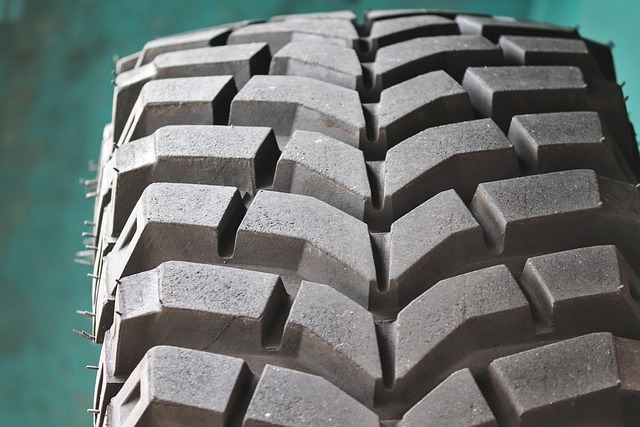To ensure your ATV battery remains in optimal condition during winter storage and is ready for use in spring, follow these key steps. Firstly, clean the battery terminals with a wire brush to remove corrosion and apply dielectric grease to protect against future rust. Charge the battery fully before storing it, aiming for a voltage between 12.4 and 12.7 volts. Select a storage location that maintains a temperature range of 20°F (-6.7°C) to 68°F (20°C), avoiding extreme cold or heat. Use an ATV-specific battery tender or maintainer to prevent discharge and maintain the battery's charge, especially in winter conditions. Regularly monitor the battery with a multimeter to detect significant voltage drops that may necessitate recharging. Store the battery off the ground, insulated against cold with a thermal cover, and ensure it's not exposed to direct sunlight or drafts. Adhering to these storage practices will safeguard your ATV battery from the harsh effects of winter and have it functioning reliably once the warmer weather returns. Regular maintenance and proper charging are essential for preserving the longevity and performance of your ATV battery throughout the year.
Preparing your ATV for winter hibernation involves more than just finding a suitable storage spot; it’s about ensuring your ride remains ready to roar back to life when the snow melts. This article delves into the top five tips for effective winter battery storage, guiding you through understanding ATV battery requirements, prepping your battery with proper cleaning and charging, mastering temperature controls, selecting an ideal storage location, and maintaining your battery’s health throughout the cold months. Follow these strategies to guarantee your ATV battery stays in peak condition, ready for adventure when winter wanes.
- Understanding ATV Battery Requirements for Winter Storage
- Cleaning and Charging Your ATV Battery Before Long-Term Storage
- Optimal Temperature Controls for Storing an ATV Battery in Winter
- Choosing the Right Storage Shed or Location for Your ATV Battery
- Regular Maintenance Checks to Ensure ATV Battery Readiness Post-Winter
Understanding ATV Battery Requirements for Winter Storage

When preparing your ATV for winter hibernation, it’s crucial to consider the specific requirements of your ATV battery to ensure it remains in optimal condition throughout the colder months. An ATV battery, like any lead-acid or sealed lead-acid (AGM) battery, can suffer from the effects of freezing temperatures and reduced charging cycles during winter storage. Firstly, choose a storage location that maintains a stable temperature above extreme cold; exposure to freezing conditions can impair battery performance and shorten its lifespan. Regularly charge your ATV battery and keep it fully charged if in storage; this helps prevent the formation of sulfate crystals on the plates, which can occur during disuse and deep discharge.
Secondly, clean any corrosion from the battery terminals and ensure a secure connection before putting your ATV into storage. Use a battery charger designed for winter use, which can maintain a float charge to keep the battery at a full state of charge without overcharging. Additionally, consider investing in a battery insulator or cover to retain some heat and protect the battery from cold temperatures. This proactive approach to winter ATV battery storage not only extends the life of your battery but also ensures that your ATV is ready for action as soon as the weather warms up. Regular maintenance and proper storage techniques are key to safeguarding your ATV battery against the challenges of winter.
Cleaning and Charging Your ATV Battery Before Long-Term Storage

To ensure your ATV battery remains in optimal condition throughout the winter months, it’s crucial to perform a few maintenance tasks before tucking it away for long-term storage. Begin by cleaning the battery terminals and casing. Use a wire brush to gently scrub away any corrosion or grime from the terminals, ensuring a good connection. Follow this by wiping down the battery case with a damp cloth to remove any dirt or residue that could accelerate corrosion or leakage during storage. Proper cleaning not only extends the lifespan of your ATV battery but also ensures a more efficient charge upon its next use.
Once the battery is clean, it’s equally important to fully charge it. A fully charged battery stored in a cool, dry place will maintain its charge better than one left partially discharged. Consult your ATV’s manual for the manufacturer’s recommended charge level and follow these instructions closely. Regularly check the battery’s voltage every month or so during storage with a reliable multimeter to ensure it retains its charge. If you notice a significant drop, consider recharging the battery, as some batteries may self-discharge over time, particularly in colder conditions. By taking these proactive steps, you can significantly reduce the risk of your ATV battery becoming unresponsive or failing when you’re ready to hit the trails again next season.
Optimal Temperature Controls for Storing an ATV Battery in Winter

When storing an ATV battery over the winter months, maintaining the correct temperature is paramount to ensure its longevity and optimal performance upon your next ride. The ideal storage environment for an ATV battery should keep it within a temperature range of 20°F (-6.7°C) to 68°F (20°C). Extreme cold can solidify the electrolyte, leading to reduced efficiency and charge acceptance, while excessive heat can cause the opposite issue, resulting in overheating and potential damage. To safeguard against the cold, consider using a battery insulator or wrapping the battery with an appropriate material that provides thermal resistance without restricting airflow. Additionally, storing your ATV battery on a shelf or rack away from direct contact with cold surfaces can prevent it from reaching freezing temperatures. If you’re in an area prone to harsh winters, a trickle charger set to a low rate can maintain a small charge, which helps to keep the battery cells from becoming fully discharged and developing a memory effect. Always follow the manufacturer’s recommendations for specific types of ATV batteries, as some may have different requirements or need additional care during storage. Proper temperature control is one of the best practices for ATV battery winterization to ensure it remains ready for action when you are.
Choosing the Right Storage Shed or Location for Your ATV Battery

When preparing your ATV battery for winter, selecting the right storage shed or location is pivotal to ensure its longevity and optimal performance upon your return to the trails. The ideal storage space should not only be secure but also climate-controlled to protect against extreme temperatures that can otherwise drain the battery’s charge. A consistent temperature is key; too cold, and the battery may not take a full charge, while too hot can accelerate wear. A well-insulated shed, away from direct sunlight and drafts, will provide an environment where the ATV battery can maintain its charge more effectively. Additionally, consider a location that offers some degree of natural light to prevent condensation that can form in dark, humid environments during warmer winter days.
Furthermore, it’s important to keep the battery clean and dry before placing it into storage. Any corrosion on terminals should be removed and terminals and connections checked for tightness. Use a battery charger to fully charge the battery prior to storing it, as a fully charged battery will hold its charge better throughout the winter months. It’s also wise to invest in a quality battery tender or maintainers designed specifically for ATV batteries, which can keep the battery at a partial state of charge without overcharging. By carefully selecting and preparing your storage location and following these steps, you’ll help ensure your ATV battery remains ready for action once the snow melts and the trails beckon.
Regular Maintenance Checks to Ensure ATV Battery Readiness Post-Winter

To guarantee your ATV battery is primed and ready for action as winter thaws into spring, regular maintenance checks are indispensable. Begin by inspecting the battery’s terminals and cables, ensuring they are clean, tight, and free of corrosion. A buildup of corrosion can interrupt the electrical connection, leading to a diminished battery performance or even a failure to start. Use a wire brush to gently scrub away any green or white deposits that form around the terminals. After cleaning, apply a coat of dielectric grease to protect the terminals from future corrosion and to maintain a secure connection.
Next, check the battery’s charge level with a reliable voltmeter or multimeter. An ATV battery should hold a charge between 12.4 and 12.7 volts when fully charged. If the voltage is below this range, it may indicate a need for charging. However, if the battery consistently holds a low charge after being fully charged, it might be time to consider replacing it. Regularly recharge your battery according to the manufacturer’s guidelines to prevent sulfation, a condition where sulfur crystals form on the lead plates, reducing capacity and shortening the battery’s lifespan. Storing your ATV in a cool, dry place can also help maintain the battery’s health throughout the winter months, ensuring it remains ready for your next adventure once the weather warms up.
When prepping your ATV for winter, safeguarding its battery is paramount. This article has outlined five pivotal tips to ensure your ATV battery remains in optimal condition throughout the colder months. From grasping the specific requirements of your ATV battery to selecting an ideal storage location, and maintaining regular checks, these steps are crucial for maintaining battery health. By carefully cleaning and charging your ATV battery before long-term storage, adhering to the right temperature controls, and performing consistent maintenance inspections, you can rest assured that your ride will be ready and raring to go as soon as winter thaws. Remember to apply these tips diligently for a hassle-free return to your ATV adventures come spring.



